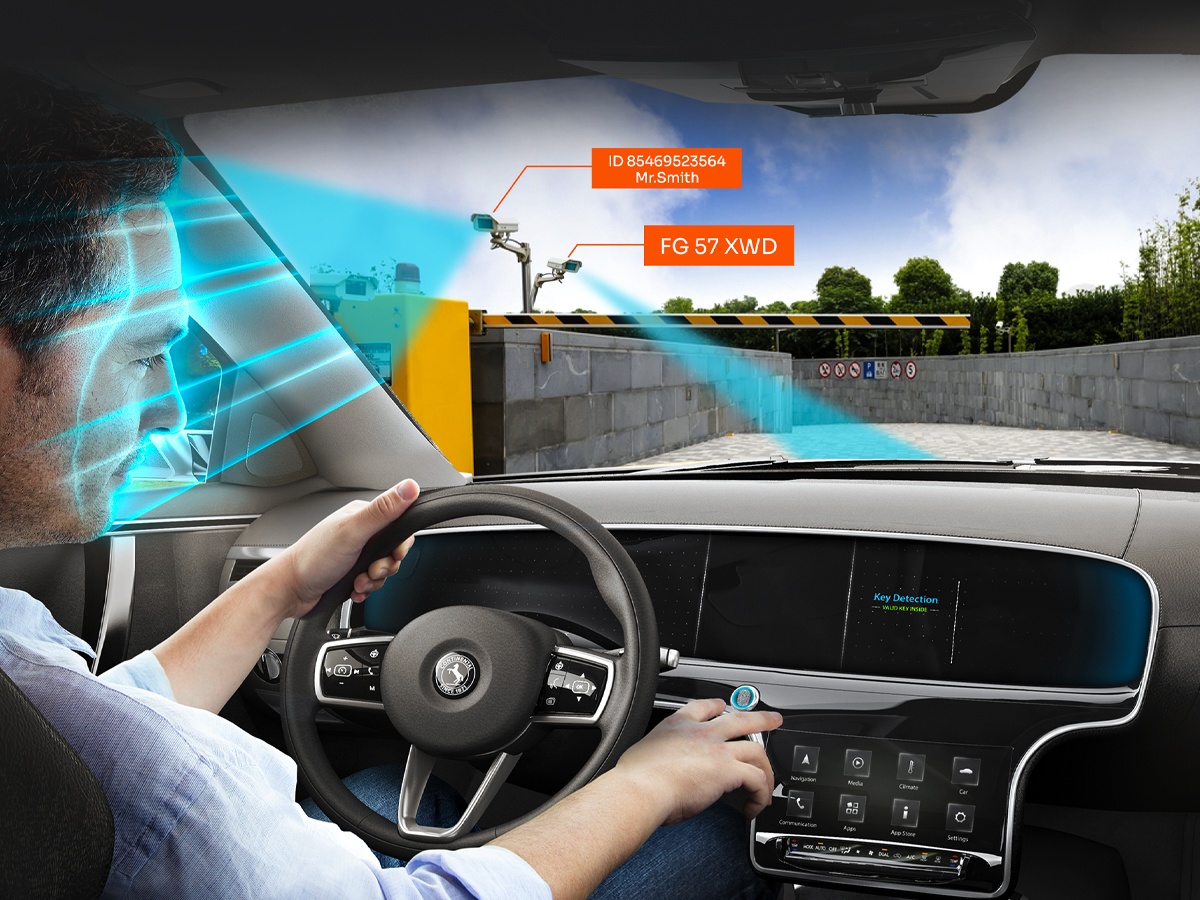
Access Control via Multi Factor Authentication using ANPR & FR
Authenticating access of a vehicle or a person usually involves verification of an ID/Identity card produced
October 5, 2021
Authenticating access of a vehicle or a person usually involves verification of an ID/Identity card produced. This method is simple but involves security complications such as intentional Identity Spoofing and more manpower for verification. Access to any physical location can be automated/controlled using multiple factors such as ANPR, ID Card, Facial Contours etc. These factors combined, would verify the identity of the person/vehicle entering a premise, instead of just a single factor like an ID card.
Need for Multifactor Authentication
The need for synchronized and heightened security measures emerges when chances of breach and other sorts of infringements outsmart existing security systems. When a robust access control system becomes the need of the hour as conventional modes like ID card and Verification PIN become vulnerable to fraudulence like spoofing. Facilities that benefit from Multifactor Authentication range from Defence and other High Security Zones like Corporate Houses to Residential Communities.
How Multifactor Authentication works?
With Multifactor Authentication, the access-seeker needs to furnish two or more identification credentials to be sanctioned access to a physical location. Adding one or more layers to increase the assurance before validating the access. In view of ensuring a robust, adaptive and failsafe security system, the identification credentials for
Multifactor Authentication broadly relies on three factors.
1. What you know
2. What you have
3. What you are
What you know – the knowledge factor
Authentication based on what you know- the knowledge factor is of extensive use in everyday life both in the physical and virtual world. This could be a password, a security question, PIN or any personal information which is known only to the access issuing authority and the access seeker.
What you have – the possession factor
Authentication based on a factor which is in possession of the seeker which could be a card, a key, a token, a vehicle license plate number or cryptographic information. Only those in possession of this factor is sanctioned access into the premise. The tokens used in this regard can be classified into connected tokens and disconnected tokens. While connected tokens require to be linked to a particular device, for instance, computer to match and validate, disconnected tokens operate based on a built in screen displaying authentication data entered by the seeker.
Who you are – the inherent factor
Authentication based on the hard to replicate aspects of human identity is extensively used in highly security- sensitive environments. Such means of authentication range from fingerprint readers to retina scanners to voice recognition and face recognition, earlobe geometry, keystroke dynamics and so on. Since authentication based on biometric characteristics rely on more than one factor which are captured individually during different time frames, there’s a need to match up both the acquisitions in an actual access control situation.
Multifactor Authentication using ANPR, FR and ID Card combinations
When a security system bases its authentication on two or more factors, the need for speedy, synchronized and snag-free processing becomes important. To achieve this, the possession factor which is the physical ID card of the employee or the vehicle’s license/number plate is captured. Consequently, the bio-metric factor – Facial contours of the employee is captured and aligned with the license/number plate or details on the ID card as per the Database. Once the match is ascertained, employee authentication is confirmed or the vehicle is provided access to the location.
AllGoVision supports Employee Authentication using Facial recognition Technology with ID card to grant access. Vehicle Authentication is done using Automatic Number Plate Recognition Technology (ANPR/LPR) with Facial Recognition Technology. This is a 2 factor verification process and not a 2 step process which saves time and our system produces results within seconds. AllGoVision ANPR supports licence plates of over 20 countries carrying Latin/English, Arabic & Korean characters. Our Facial Recognition system supports up to 12Million face data base and is 1:N & 1:1 validated by NIST.
AllGoVision, for its Access Control solution using Multi-Factor Authentication (MFA), has integrated with Milestone Video Management System (VMS) and Lenel OnGuard Access Control application. This integration has enabled seamless and secure access control for many of our end customers, enhancing their overall security.

Synchronize to Secure
Synchronizing the data is extremely important for achieving higher security here. There should be no window for any kind of breach while fetching the information from the ANPR, FR or ID card cameras/zones. Few ways in which this Sync can be achieved are
• Simultaneous placement of cameras so the action of Vehicle number capture and Facial capture happens at close
instances
• If the above scenario is infrastructurally difficult to achieve, then there should be no loop holes/potential entry paths for any vehicle or person. The zones should be closely monitored to prevent any breach.
In spite of heightening the security via data synchronization, there could be circumstances in which Authentication could fail. If an employee/visitor accidentally or on purpose brings a vehicle which is not registered in the system yet or a VIP arrives without prior notice, this could lead to potential Authentication failure.
Multifactor Authentication is indispensable for locations where security is of utmost importance. While it helps companies/enterprises to optimize the utilization of resources and increase security & safety in their premises, it also enhances the convenience quotient of the access seekers themselves by avoiding stopping & manual register entry process at the entry & exit gate.
Contact Us